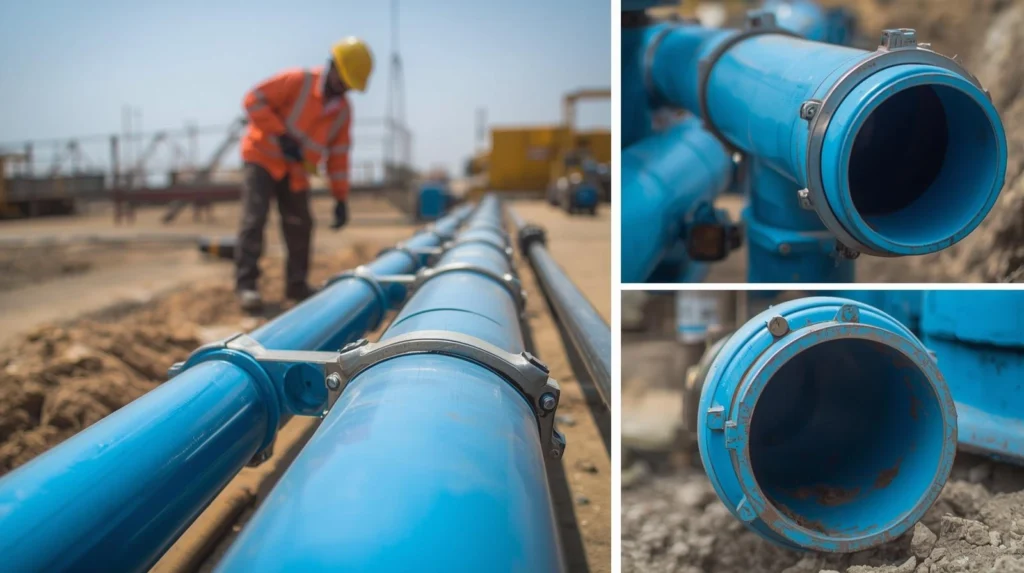Did you know that Pakistan loses up to 40% of its water supply due to outdated and inefficient distribution systems?
In a country where water scarcity is a growing concern, the need to reduce water loss is more pressing than ever. While the challenges are significant, one of the most effective solutions emerging in recent years is the use of High-Density Polyethylene (HDPE) pipes. These pipes are making a tremendous difference in Pakistan’s water management systems by addressing leaks, improving efficiency, and enhancing sustainability.
In this post, we’ll explore how HDPE pipes are helping reduce water loss in Pakistan’s distribution systems and why they are quickly becoming the preferred choice for water conservation. You’ll also discover actionable insights and real-world examples of how businesses and local governments are using HDPE pipes to tackle water loss.
Why is Water Loss a Major Issue in Pakistan?
Water loss in distribution systems is a critical issue that has plagued Pakistan for decades. As urbanization increases and industrial activities grow, the demand for clean water is at an all-time high. However, the country’s outdated infrastructure and aging pipelines are contributing to significant water wastage. A 2019 report from the Pakistan Council of Research in Water Resources (PCRWR) revealed that the country loses an estimated 30-40% of its water supply through leaks and inefficient distribution systems.
The reasons behind this loss are multifaceted:
- Aging Infrastructure: Many water pipelines were laid decades ago and have deteriorated over time.
- Leakages and Cracks: Traditional pipes made of materials like galvanized steel or concrete are prone to leaks.
- Inadequate Maintenance: Due to limited resources, maintenance is often neglected, further exacerbating the problem.
HDPE pipes offer a solution by providing a more durable, efficient, and cost-effective alternative to traditional water distribution pipes.
How HDPE Pipes Are Revolutionizing Water Distribution in Pakistan
What Makes HDPE Pipes Different?
HDPE pipes are made from high-density polyethylene, a durable and flexible plastic material. This material is particularly well-suited for water distribution because of its ability to withstand high pressures, resist corrosion, and remain durable for decades.
Unlike traditional materials, such as steel or concrete, HDPE pipes are:
- Lightweight: Easier to handle and install.
- Corrosion-resistant: They do not rust, ensuring longevity in water systems.
- Flexible: Able to bend without cracking, making them ideal for areas prone to soil movement or seismic activity.
These qualities make HDPE pipes a superior option for replacing old, damaged pipelines, significantly reducing water loss.
How Do HDPE Pipes Reduce Water Loss?
- Reduced Leakage: HDPE pipes are known for their robust sealing properties. Unlike traditional metal or cement pipes that develop cracks and leaks over time, HDPE pipes offer a tight, leak-resistant system. Their smooth inner surface minimizes friction, allowing water to flow efficiently without losing pressure.
- Longer Lifespan: The high resistance of HDPE to environmental stress means that these pipes last much longer than traditional materials. On average, HDPE pipes can last for up to 50 years, which translates to fewer replacements and less water wastage.
- Seamless Construction: HDPE pipes are typically joined using heat fusion, creating a continuous, seamless structure. This process eliminates the risk of joint leakage, a common issue with other types of pipes that are joined using mechanical fittings.
- Improved Pressure Resistance: HDPE pipes can withstand high internal pressures, which is particularly beneficial in areas where the water supply system operates at high pressures. This strength reduces the chances of pipe bursts, a common cause of water loss.
Case Study: Lahore’s Water Supply Overhaul
In Lahore, one of Pakistan’s largest cities, the government implemented a project to replace old, leaking pipes with HDPE pipes in the city’s primary water supply lines. The project aimed to reduce non-revenue water (water that is produced but not billed due to leaks, theft, or metering errors).
As a result of the replacement, Lahore saw a 25% reduction in water loss within the first year. This not only saved a significant amount of water but also improved the efficiency of the distribution system, ensuring that more people had access to clean water.
Real-World Applications of HDPE Pipes in Water Conservation
Municipal Water Supply Systems
Municipalities across Pakistan are increasingly adopting HDPE pipes to modernize their water infrastructure. By replacing aging steel or concrete pipes with HDPE, cities can ensure a more reliable and efficient water supply. For example, Islamabad’s water distribution network has undergone a similar upgrade, with HDPE pipes used to replace old systems that were notorious for leaks.
Agricultural Water Management
Pakistan’s agricultural sector, which consumes about 90% of the country’s water, has also benefited from HDPE pipes. The use of HDPE pipes in irrigation systems has helped farmers conserve water by delivering it directly to the roots of plants with minimal evaporation. This is especially important in regions like Sindh, where water scarcity is a pressing issue.
Industrial Applications
Industries in Pakistan, particularly in textiles and manufacturing, rely heavily on water for their operations. By upgrading to HDPE pipes, many industrial plants have managed to reduce water waste, lower operating costs, and improve their sustainability practices.
Why HDPE Pipes Are the Future of Water Distribution in Pakistan
Environmental Benefits
In a country grappling with water scarcity, reducing water loss is one of the most effective ways to conserve this precious resource. By switching to HDPE pipes, Pakistan can reduce wastage and improve the overall sustainability of its water systems. Furthermore, HDPE pipes are recyclable, making them an environmentally friendly choice in the long run.
Economic Impact
Reducing water loss doesn’t just conserve resources—it also saves money. According to the World Bank, Pakistan could save millions of dollars annually by upgrading its water distribution infrastructure. By minimizing leakage and increasing efficiency, HDPE pipes contribute to both economic and environmental sustainability.
Long-Term Viability
As Pakistan continues to face climate change challenges, the need for resilient infrastructure becomes even more critical. HDPE pipes, with their durability and resistance to environmental stresses, provide a long-term solution to water distribution issues, ensuring that future generations have access to clean water.
Conclusion
HDPE pipes are a game-changer for Pakistan’s water distribution systems, offering a sustainable, cost-effective solution to one of the country’s most pressing issues—water loss. Their durability, resistance to corrosion, and efficient design are helping reduce water wastage and improve the reliability of the water supply across cities, agriculture, and industry.
By investing in HDPE pipes, Pakistan can take a significant step toward addressing water scarcity and ensuring that this essential resource is used more efficiently. If you’re involved in water management, whether at the municipal, industrial, or agricultural level, consider the long-term benefits of HDPE pipes in your water distribution systems.
FAQ Section
1. What is the lifespan of HDPE pipes in water distribution systems?
HDPE pipes can last up to 50 years, significantly reducing the need for frequent replacements compared to traditional materials like steel or concrete.
2. Are HDPE pipes resistant to corrosion?
Yes, HDPE pipes are highly resistant to corrosion, which is a common problem with metal pipes. This makes them ideal for use in water distribution systems.
3. How do HDPE pipes improve water pressure?
HDPE pipes are designed to withstand high pressure, reducing the risk of pipe bursts and ensuring efficient water flow.
4. Can HDPE pipes be used in irrigation systems?
Absolutely! HDPE pipes are commonly used in agricultural irrigation systems due to their durability and ability to deliver water efficiently with minimal evaporation.
5. How does HDPE help in reducing water loss in Pakistan?
HDPE pipes reduce water loss by preventing leaks and bursts, offering a seamless, corrosion-resistant alternative to outdated piping systems.
6. Are HDPE pipes environmentally friendly?
Yes, HDPE pipes are recyclable and have a lower environmental impact compared to other materials used in water distribution systems.
7. What are the main benefits of switching to HDPE pipes?
The main benefits include reduced water loss, increased durability, lower maintenance costs, and improved sustainability in water management systems.


